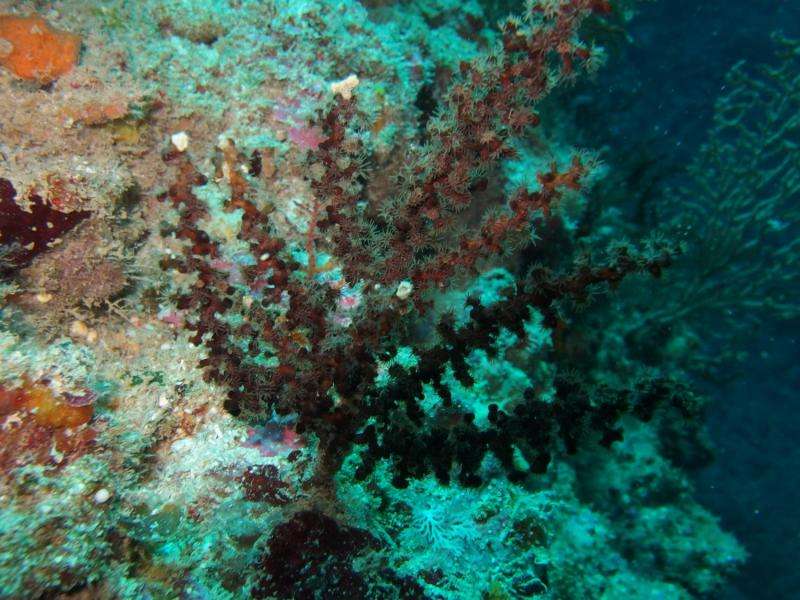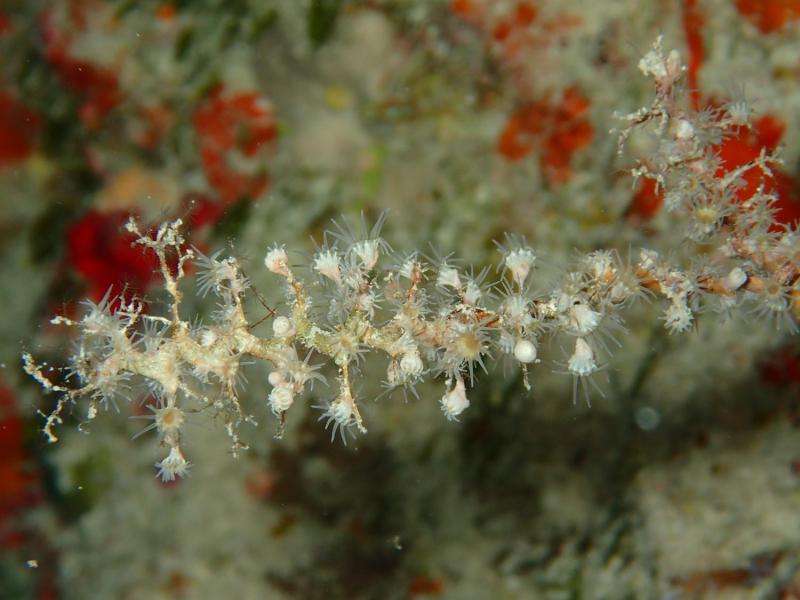Two new zoantharian species found on eunicid worms in the dark in the Indo-Pacific ocean

While studying the abundant, yet poorly known fauna of the zoantharian Epizoanthus genus in the Indo-Pacific Ocean, Japanese graduate student Hiroki Kise and Dr. James Davis Reimer, both affiliated with University of the Ryukyus, Japan, focused on examining the species living on eunicid worm tubes. These Epizoanthus species form colonies and are only found living on the outside surfaces of tubes in which the eunicid worms live. Although these zoantharians often live in areas that are deeper than the range of SCUBA divers and tend to be indistinguishable on the outside, the present research, published in the open-access journal ZooKeys, reports the discovery of two new species.
Both new species have been found in low-light environments. While one of the species, scientifically named Epizoanthus inazuma, showed preference for either coral reef slopes, reef floors, or the sides of their overhangs in Okinawa, the other one, E. beriber was seen to tolerate cave environments exclusively, and is found in Palau and Papua New Guinea. To recognise them as new species, the researchers turned to molecular analyses combined and compared to morphological data. Thus, this discovery presents yet another example of the utility of molecular methods as an effective tool in taxonomic and biodiversity research.
Forming colonies resembling a classic lightning-bolt shape, the new coral species Epizoanthus inazuma has reasonably been given a name meaning 'lightning' in Japanese. The second new species is also named in a reference to its lifestyle as it bears the name of the local Palauan folklore character Beriber, who lived in a cave.
The researchers believe that it is highly likely that there are other undescribed species in coral reefs. There is even greater likelihood that such are currently hidden in underwater cave habitats. The authors do not exclude the possibility that these new zoantharian species may be distributed across other locations in the Pacific, where they could easily be mistaken for other closely related species.

More information: Hiroki Kise et al. Unexpected diversity and a new species of Epizoanthus (Anthozoa, Hexacorallia) attached to eunicid worm tubes from the Pacific Ocean, ZooKeys (2016). DOI: 10.3897/zookeys.562.6181
Journal information: ZooKeys
Provided by Pensoft Publishers




















